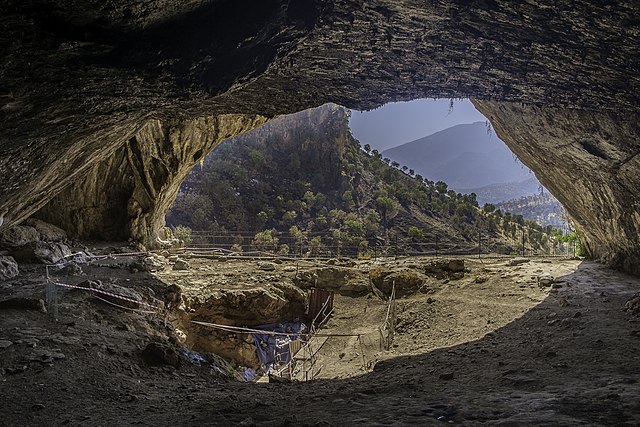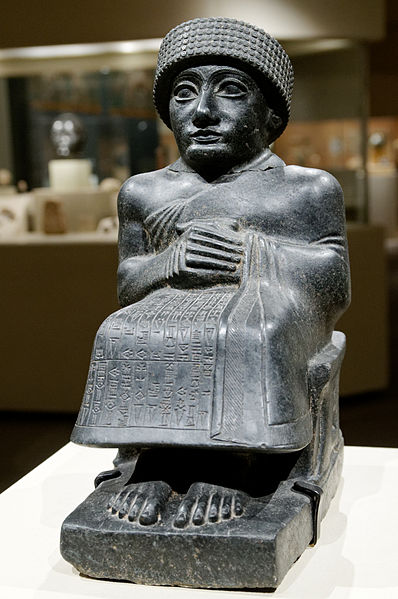Iraq is a country in West Asia that largely corresponds with the territory of ancient Mesopotamia. The history of Mesopotamia extends from the Lower Paleolithic period until the establishment of the Caliphate in the late 7th century AD, after which the region came to be known as Iraq. Encompassed within Iraqi territory is the ancient land of Sumer, which came into being between 6000 and 5000 BC during the Neolithic Ubaid period of Mesopotamian history, and is widely considered the oldest civilization in recorded history. It is also the historic center of the Akkadian, Neo-Sumerian, Babylonian, Neo-Assyrian, and Neo-Babylonian empires, a succession of local ruling dynasties that reigned over Mesopotamia and various other regions of the Ancient Near East during the Bronze and Iron Ages.
Inside the Shanidar Cave where the remains of eight adults and two infant Neanderthals, dating from around 65,000–35,000 years ago were found.
Bronze head of an Akkadian ruler from Nineveh, presumably depicting either Sargon of Akkad, or Sargon's grandson Naram-Sin. The Akkadian Empire was the first ancient empire of Mesopotamia after the long-lived civilization of Sumer.
Panoramic view of ruins in Babylon photographed in 2005
7th-century BC relief depicting Ashurbanipal (r. 669–631 BC) and three royal attendants in a chariot. Ashurbanipal was the king of the Neo-Assyrian Empire which was the largest empire in history up to that point.
Mesopotamia is a historical region of West Asia situated within the Tigris–Euphrates river system, in the northern part of the Fertile Crescent. Today, Mesopotamia is known as present-day Iraq and north-eastern Syria. In the broader sense, the historical region of Mesopotamia also includes parts of present-day Iran, Turkey, and Kuwait.
A modern satellite view of Mesopotamia, October 2020.
The Tigris river flowing through the region of modern Mosul in Upper Mesopotamia.
Mesopotamian Marshes at night, southern Iraq. A reed house (Mudhif) and a narrow canoe (Mashoof) are in the water. Mudhif structures have been one of the traditional types of structures, built by the Marsh people of southern Mesopotamia for at least 5,000 years. A carved elevation of a typical mudhif, dating to around 3,300 BCE was discovered at Uruk.
One of 18 Statues of Gudea, a ruler around 2090 BC








